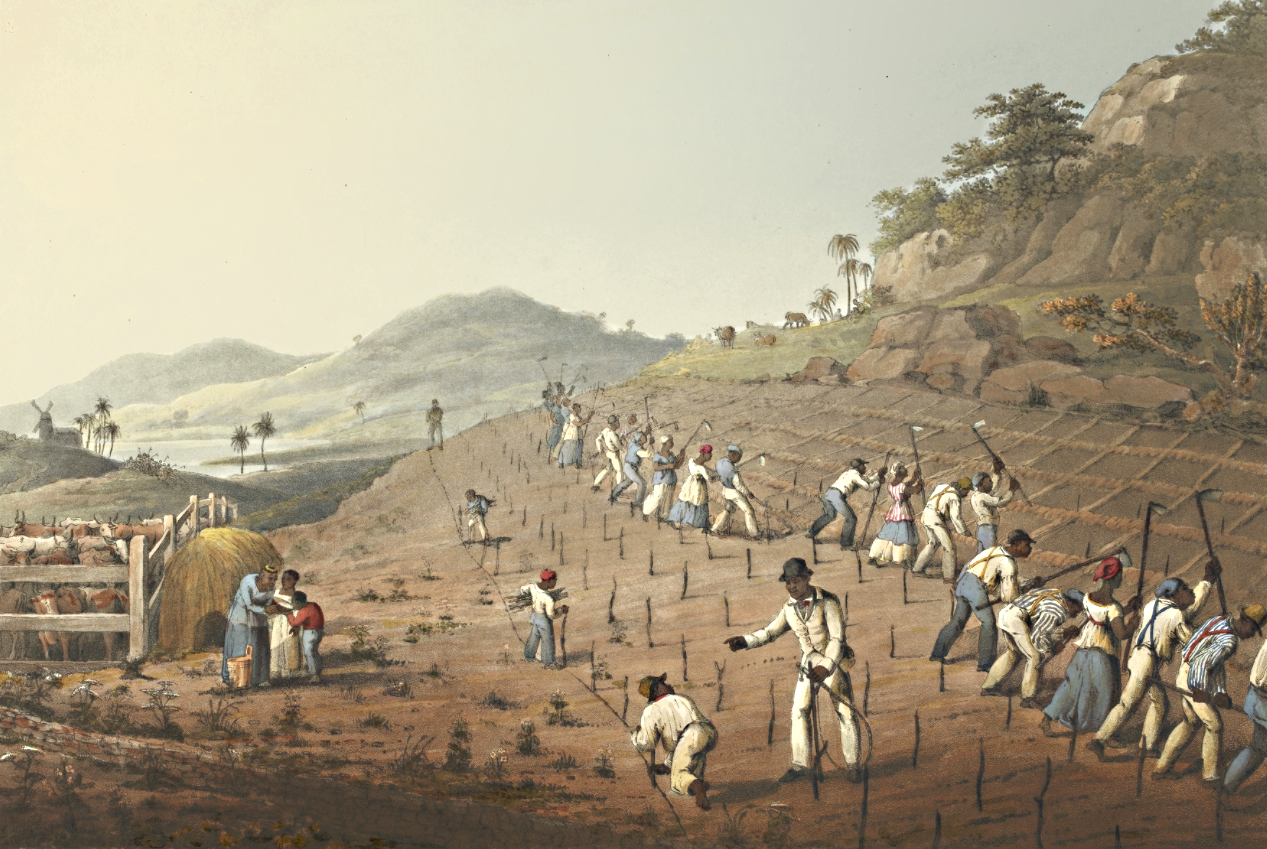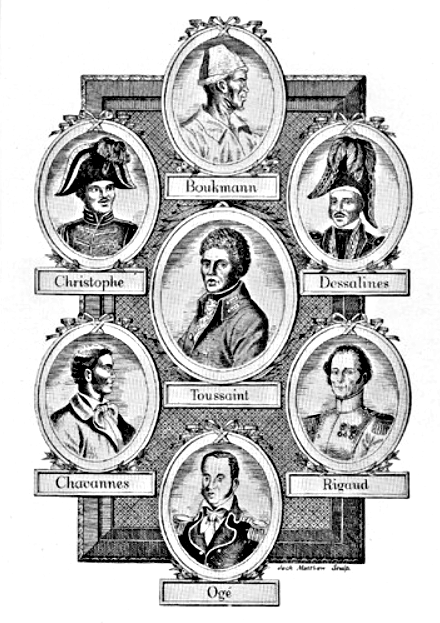A Brief History of North American Slavery III
/Louis The Sixteenth of France and Emporer Napoleon Bonaparte who Aided the imperial slave complex
Part III: France and the Imperial Slave Complex
Centuries of Native American tribal bondage and imperial European slavery had been ongoing within North America when further nations of Europe beyond the earliest undertook large scale trade of human beings. No matter how reprehensible any practice might be, the act of profiting at the cost of other people has seemingly forever lurked within humanity’s instinctual depths. Its practice according to some reports predates the existence of written language and slavery has been like a poison coursing through the veins of humanity for millennia. Eventually there was another slave trade competitor beyond the Portuguese, Spanish, and English in the North American colonial period that sought greater power by any means necessary, imperial France.
With the exception of a single imported child slave named Oliver Le Jeune in French held Canada during 1629 it was not reportedly in that country until the start “of the 1670s when the French began to receive captives from their Aboriginal partners as tokens of friendship during commercial and diplomatic exchanges. The Illinois were notorious for the raids which they led against nations to the southeast and from which they brought back captives.” This would feature the undeniability of slavery in a tribal form predated the arrival of the Europeans and was a longstanding existing custom of the original North American societies. Similar to the Native North American societies and English practices within its colonies, the French were a part of a larger imperial European slave complex that extended across the world.
We can observe that native tribes had engaged in subjugation as a means of controlling captives and this system was rendered more widespread and became a more destructive and permanent form of human bondage. Following the arrival of the early 1700s “the practice of buying and selling these captives like merchandise was established.” In just thirty short years the French had morphed the already existing tribal bondage into a series of laws that converted any captive to salable property. One likely motivating factor in this process was religion, many French like the English and Spanish believed that anyone unbaptized in the Christian faith was a heathen and thus not protected by “civilized” law. The origins of these native slaves ranged from people in tribes that include the Fox, Apache, Labrador, Chickasaw, Pawnee, and Sioux but the Louisiana Territory held by France in southern North America and its Caribbean holdings prevented the widespread use of native tribes due to location and where planters “preferred African slaves, who they judged more apt to work in their indigo and tobacco fields.” We can in this cold and inhuman calculation see that not due to any lesser status but the ability of Africans to survive in hotter temperatures better than Native slaves or European indentured servants was the concern. This illegal domination generated and protected imperial profits and was perhaps the greatest motivator for using slavery.
French Held Slaves in Antigua work A Sugar Cane Field
“Trade in human beings for work in plantations and mines in the Caribbean also occurred within the region itself, with trade routes linking Brazil, the Gulf of Mexico seaboard and the coasts of North America and the Caribbean islands. They were the scene of constant trafficking from the sixteenth to the nineteenth centuries, which can barely be quantified but should not be overlooked. For three centuries, Guadeloupe and Martinique took in slaves from other mainland and island colonies in the Caribbean region in which trafficking was conducted via the human trade hubs of Saint Thomas, Saint Martin and Saint Barthélemy.”i
The French would expand their slaving to include Africans in time and construct forts in Western Africa to protect the imperial financial interests. According to Canadian historical officials the slave trade from Africa began in Louisiana during 1719. “Effectively, it lasted about 12 years, from 1719 to 1731, when the King of France resumed authority over Louisiana after having temporarily ceded it to franchise holders and investors.” However, this cessation of most slavery only extended to most continental areas and not islands of the French Antilles which held most French slaves in captivity to work plantations. This change did not occur due to benevolence and instead emerged because the islands of Antilles were more profitable to French slave traders.ii Additionally, hundreds of black slaves were abducted from English ships or sent from the Antilles long after King Louis the XV of France resumed his financial dominion.
“For more than two centuries, French settlements in Africa and the Americas relied on enslaved laborers to produce colonial commodities and perform domestic service. Between the 1620s and the 1840s, more than one million Africans-and thousands of Amerindians-lived as slaves in France’s American colonies…Although concentrated in the Caribbean, enslaved people lived in all of France’s Atlantic colonies under widely varying conditions…French settlement played a significant role in the larger history of slavery in the Atlantic world.” The Low County Digital History Initiative at the College of Charleston offers that system of slavery may have varied and changed in time based on “Spanish, Portuguese, and to a lesser extent French settlers from along the Mediterranean Sea often had greater exposure to sub-Saharan Africans through maritime trade systems established before the” transatlantic “slave trade. Historian Frank Tannenbaum argued that this prior exposure translated to greater openness towards manumission (where individual slaveholders could choose to free their slaves), multicultural exchange, sexual relationships, and even intermarriage between Europeans and Africans. In contrast, norther European settler and traders, such as the English and Dutch, had less prior exposure to sub-Saharan Africans, or to Mediterranean slavery systems. Their laws for establishing chattel slavery primarily formed in the context of the New World, with a heightened economic incentive to secure slavery for plantation agriculture through rigid racial hierarchies.”iii Yet while the French might have embraced more benevolent stances than other nations, in some areas though could be just as bad and worse.
Portraits of Haitian Revolution Heroes
According to historian Brett Rushforth just before a notable slave revolution in the Caribbean the island of Saint-Domingue held roughly “500,000 enslaved people…another 150,000 labored in Martinique and Guadeloupe”.iv “Slavery was a part of all the societies in the French Americas, but while it was of relatively marginal importance in Canada it was the central economic structure in the Caribbean colonies. The French colonies there – and particularly the last to be formed, that of Saint-Domingue – expanded with startling speed during the eighteenth century, prospering and generating enormous wealth for France.”v In just these three islands France held more African slaves than the entirety of slaves held at one time by most nations in North America. It would require the largely unexpected and violent historical turn of the French Revolution to shatter the imperial desires for slavery. “During the revolutionary years starting in 1789, however, a series of dramatic transformations took place in the French Caribbean colonies, leading to the abolition of slavery by the French National Convention in 1794, and ultimately the defeat of French armies in Saint-Domingue and the creation of Haiti.”
One notable revolution against the imperial slavery of France was the Haitian Revolution that during 1791 was the only instance of successful national slave rebellion in world history.vi According to one study of the related imperial French crimes, “slavery, resistance, and emancipation in French settlements played a significant role in the larger history of slavery in the Atlantic world.” It would require countless failed slave revolts, ceaseless imperial brutality, and the acts of multiple Enlightenment philosophers, religious dissidents, and secular advocates over two centuries to create enough force to abolish slavery in France, but even when slavery ended within its continental borders during the 1840s it persisted in some places overseas within the French Antilles. In fact, the greatest majority of its slaves were located outside the North American continent itself.
“The majority of enslaved Africans went to Brazil, followed by the Caribbean” which largely did not rest within English hands but was controlled by the Portuguese, Spanish, French, and Dutch. Even the Danish would engage in sending hundreds of thousands of slaves to the Americas without possessing any notable land holdings in the New World because slavery was a very profitable business for the imperial powers. Slavery allowed the creation of profit by subjugation without any requirement of skill or talent and relied on the power of oppression endowed by religion and brutal force to succeed. While as many have stated millions of African slaves were taken by imperial powers to the New World, they do not often mention the number of African slaves that came to the United States was roughly just over three hundred thousand people or four to six percent of the entire slave population in the Americas. Canada had even fewer slaves with some estimates reporting under five thousand slaves held within the entirety of its territory. Yet even the repression of one person is contrary to the many principles of the Enlightenment and later nearly universal ethics opposing legalized enslavement by the imperial monarchies.
Sincerely,
C.A.A. Savastano
i. SCHMIDT, N. (n.d.), Slavery and its Abolition, French colonies, Research and Transmission of Knowledge, The Slave Route Project, UNESCO, unesco.org
ii New France, Population, Slavery, Virtual Museum of New France, Canadian Museum of History, historymuseum.ca
iii. African Passages, Low County Adaptations, (n.d.), Low County Digital History Initiative, College of Charleston, ldhi.library.cofe.edu
iv. RUSHFORTH, B. (2012). Bonds of Alliance: Indigenous and Atlantic Slaveries in New France. Chapel Hill: University of North Carolina Press, jstor.org
v. DUBOIS, L. (2011). Slavery in the French Caribbean, 1635-1804, Cambridge University Press, Cambridge.org
vi. Manisha Sinha, August 23, 2016, The U.N. Is Commemorating Haiti’s Role in Ending the Slave Trade. Here’s Why, Time Magazine, time.com
Related Articles
A Brief History of North American Slavery Part I (Portugal and Spain circa 1444)
A Brief History of North American Slavery Part II (England circa 1640s)

